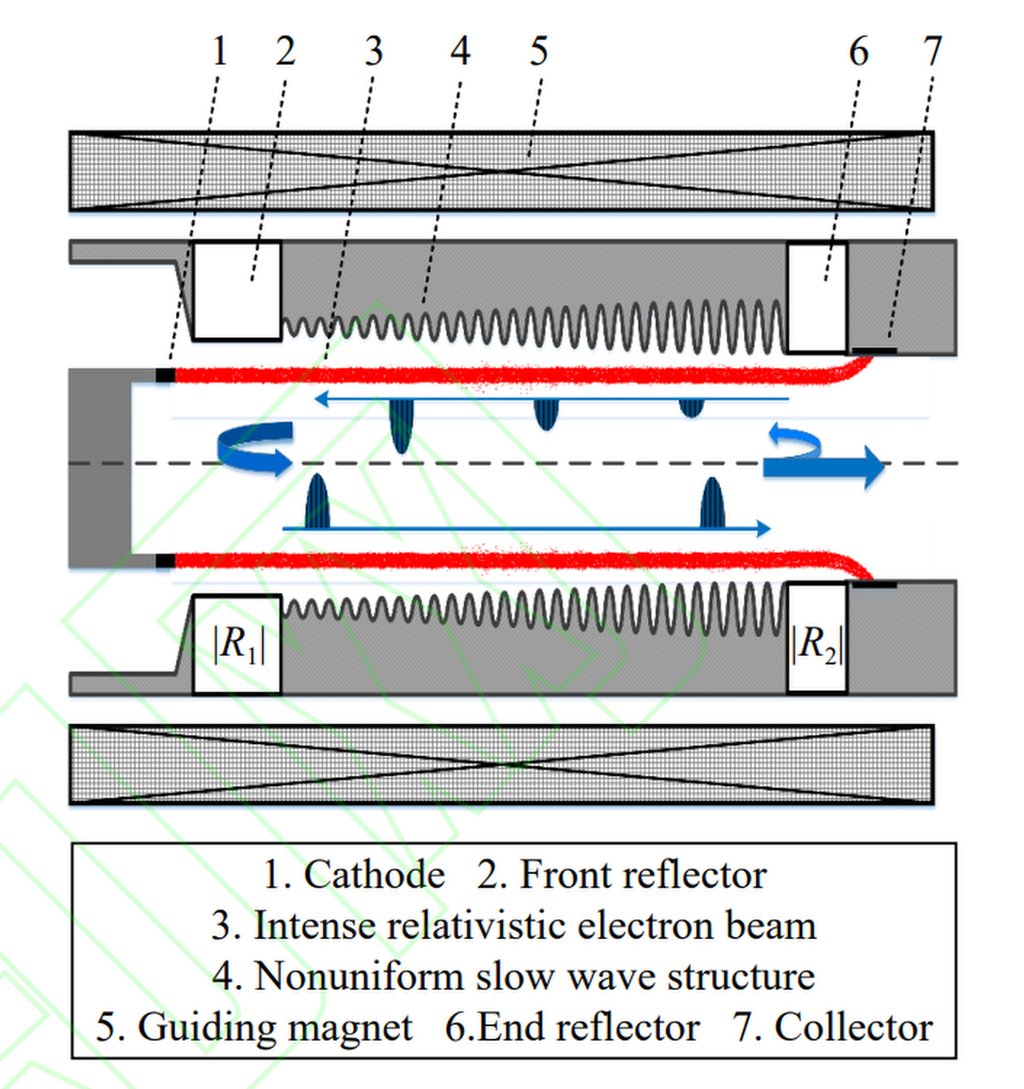The concept is rooted in the physics of “superradiance”, a design that promises unprecedented peak power, efficiency and firing speed – a combination that would mark a dramatic leap beyond limitations that have long constrained high-power microwave systems.
Published in a recent paper by a team from the PLA Academy of Military Sciences and Key Laboratory of Advanced Science and Technology on High Power Microwave, the design outlines a compact, relativistic electron beam device that leverages a non-uniform slow-wave structure and precision feedback control to generate a rapid-fire sequence of sub-nanosecond-scale microwave bursts.
Computer simulations show the system producing a first pulse with a peak power of 16.6GW – boosting input power with conversion efficiency up to 143 per cent without violating the law of power conservation. Instead, it leveraged the coherent, avalanche-like emission of radiation from tightly bunched electrons.

Subsequent pulses maintained power above 10GW, each lasting just 0.77 nanoseconds, with a central frequency of about 9.7 gigahertz.


